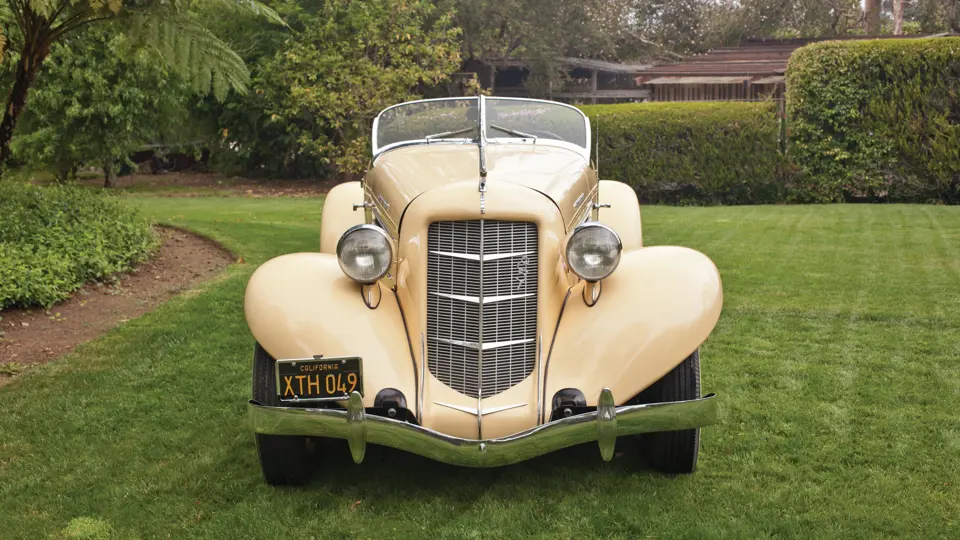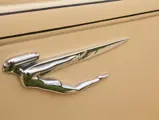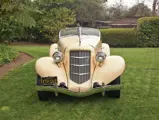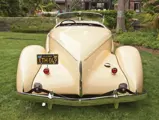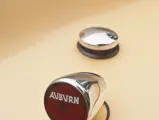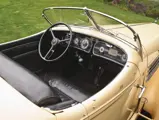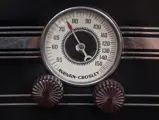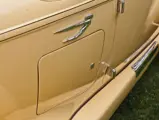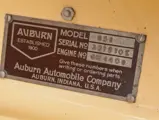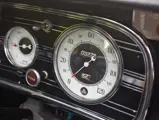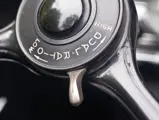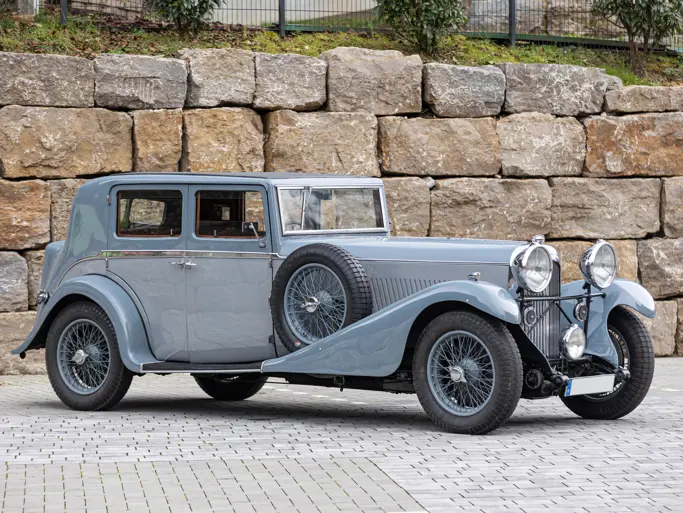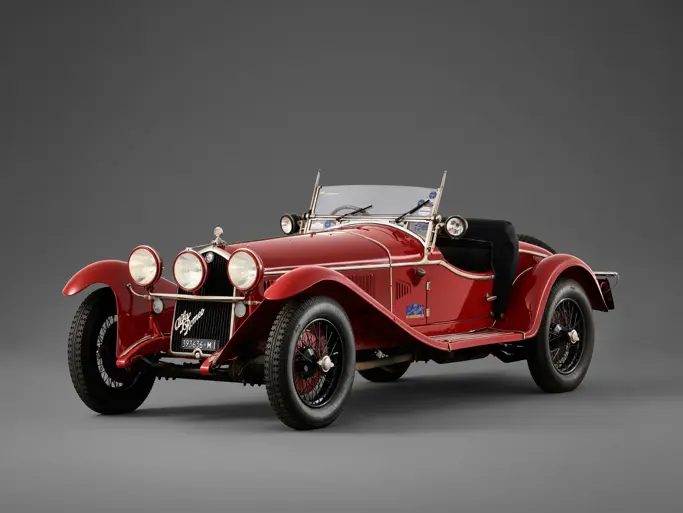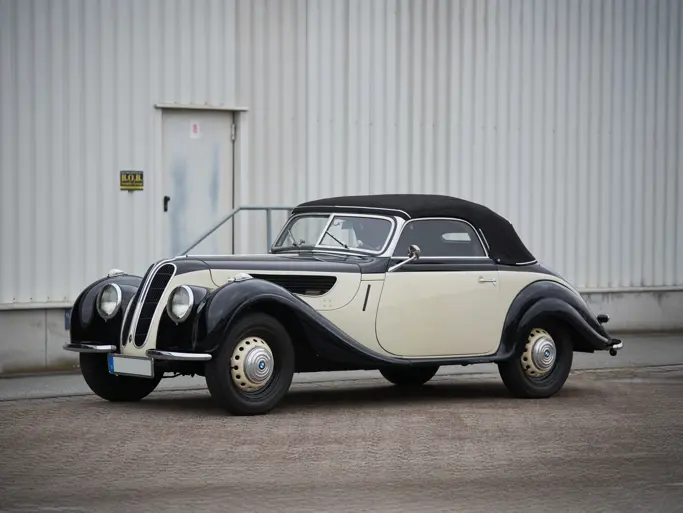150 bhp, 268.6 cu. in. eight-cylinder inline side-valve engine, three-speed manual gearbox, solid front axle with semi-elliptic leaf springs, two-speed live rear axle with semi-elliptic leaf springs, four-wheel hydraulic drum brakes. Wheelbase: 127"
- Iconic Gordon Buehrig design
- Stunning supercharged speedster
- Single ownership since 1969
Had it not been for Errett Lobban Cord, Auburn might have remained unremarkable, just one of 400 makes of automobiles built in Indiana before World War II. Entering the auto business after graduating from high school in Los Angeles, Cord operated a number of garages and built race cars that he drove on West Coast dirt tracks. By the early 1920s, he had moved to Chicago, where he became a top salesman for Moon cars. Having saved some money, he made a deal with the foundering Auburn Automobile Company of Auburn, Indiana.
Taking the job of general manager at Auburn in 1923, Cord obtained an agreement that if sales improved sufficiently he could buy into the firm. He then spruced up the accumulated inventory of unsold Auburns with bright paint jobs and nickel trim and quickly sold them all. By 1926, Cord was president of the company and held a controlling interest. He readied new models and positioned Auburn as a performance car at a low price, which further enhanced sales. Among these was a low-priced eight-cylinder car, good value at its $1,895 price tag in 1925 and even better at $1,395 two years later.
Stutz was then making a name for itself on America’s racing circuits, and Auburn took up the challenge. Auburn’s answer to Stutz was a handsome boat-tailed speedster. Introduced in the second series for 1928, the 8-115 speedster was said to have been styled by Alexis de Sakhnoffsky, the Russian count who had emigrated to the U.S. in the 1920s to work at Auburn. The company embarked on a competition foray, sending speedsters to Europe and South America, one of them campaigned by Malcolm Campbell, the London distributor. In the United States, driver Wade Morton clocked 108.46 mph with a speedster on a measured mile at Daytona Beach and covered 2,033 miles in 24 hours for a record 84.7 mph average at Atlantic City. He also set a new record at Pike’s Peak. The results were satisfying, the publicity wonderful. More to the point, the Stutz cost nearly $5,000, the Auburn just $2,195.
The 1931 line was redesigned by Alan Leamy, a young designer Cord had hired to work on his L-29 project. Leamy applied some of the Cord hallmarks to the Auburn body, adapting the L-29’s split grille shell as a focal point of the design. The 1931 cars became the best-selling Auburns ever. A new speedster was added to the line in the autumn, with raked windshield and boat-tail, one of the handsomest Auburns of all time.
For 1932, Cord and his Auburn team had another ace up their sleeves – a V-12. Priced as low as $1,105, it represented incredible value during hard times. The same year, a Columbia two-speed rear axle became available, enabling a choice of drive ratios, effectively six speeds ahead. For 1934, a six-cylinder car was re-introduced, alongside a restyled eight. A diminished V-12 line was kept alive in upscale Salon trim but using the old bodies. At year’s end, the twelve was history, but Auburn had one more arrow in its quiver. The company pulled out all the stops for what would be the final speedster.
The 1935 Auburn styling was the work of Gordon Buehrig, who had designed the immortal Model J Duesenberg. Making the 1934 theme more upright yet more graceful, Buehrig also lowered the speedster’s tail, making it smoother and more aerodynamic. With the V-12 gone, a more powerful eight was called for, so Auburn turned to August Duesenberg to adapt the Model J’s centrifugal concept to the side-valve engine. With 6.5:1 compression, the supercharged Model 851 developed 150 bhp at 4,000 rpm. On the Bonneville salt flats, company driver Abner “Ab” Jenkins set 70 new unlimited and American speed records for stock cars. Each new speedster was delivered with a dashboard plaque certifying that the car had been driven by Jenkins to more than 100 mph.
The current owner purchased this Auburn speedster from R.A. Straker of Zanesville, Ohio in 1969. It has been in the same collection ever since. Straker had bought it a few years earlier from Pierre Fontana, another Ohio collector. At the time, it was missing three fenders and one door. As a matter of expediency, Fontana restored it with fiberglass replacement parts, the way the car is presented today. The car is known to have matching chassis, engine and supercharger numbers. Complete with California black plates from the time of the vendor’s early ownership, this is an exceptional Auburn speedster.




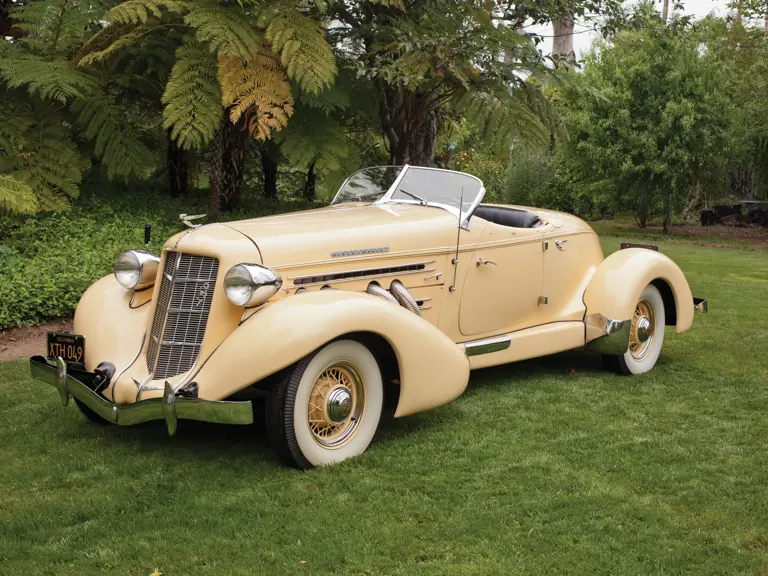

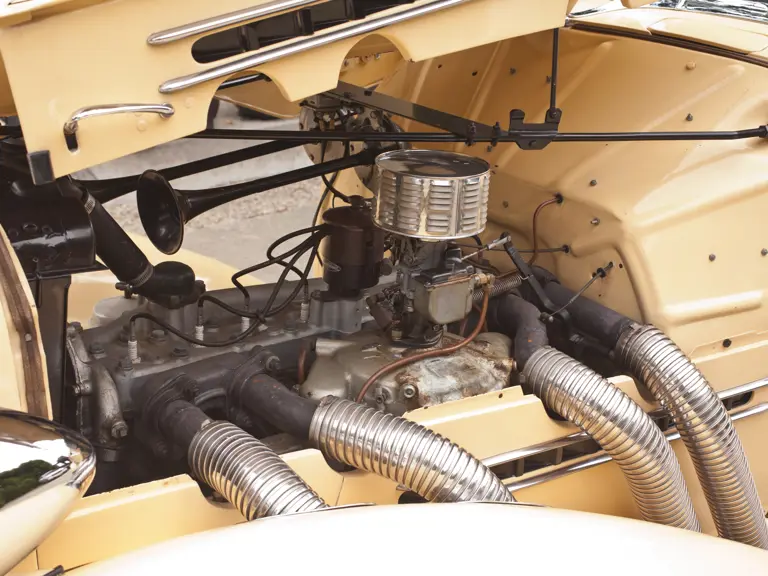
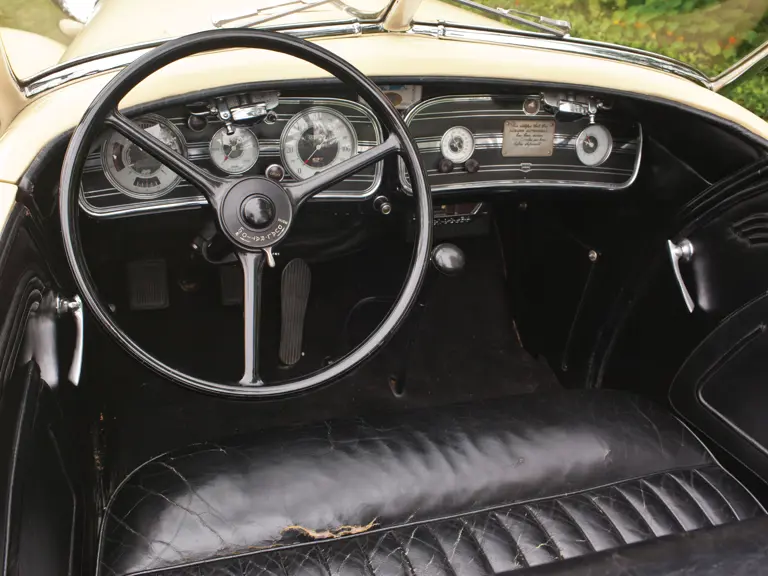
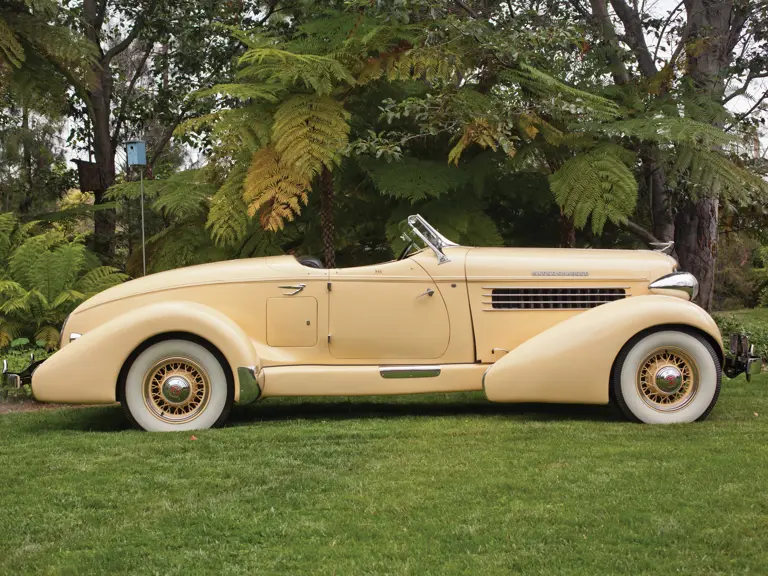
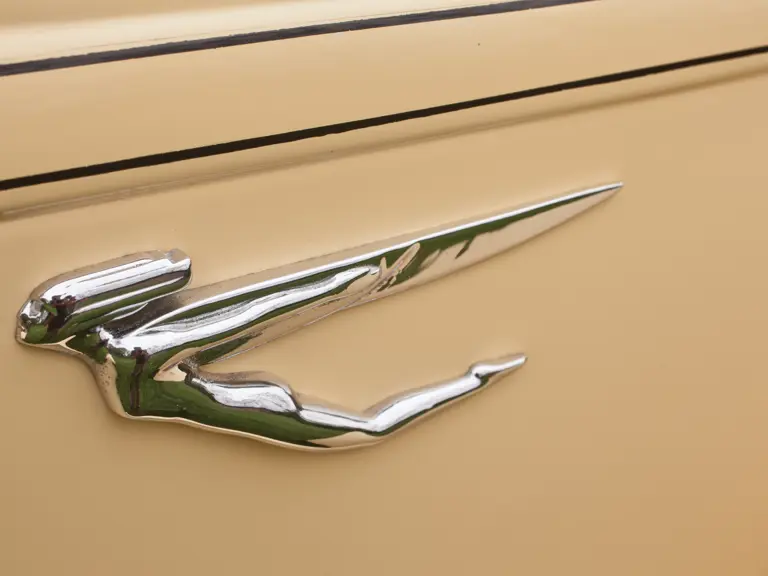
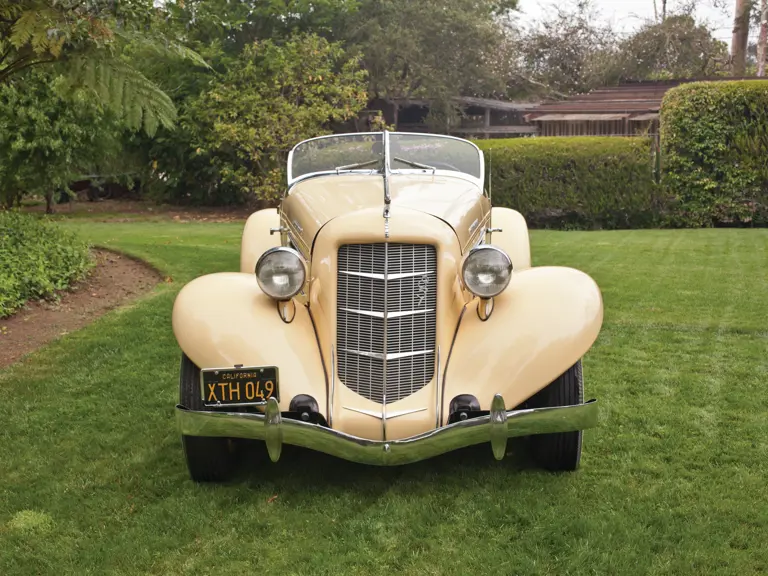
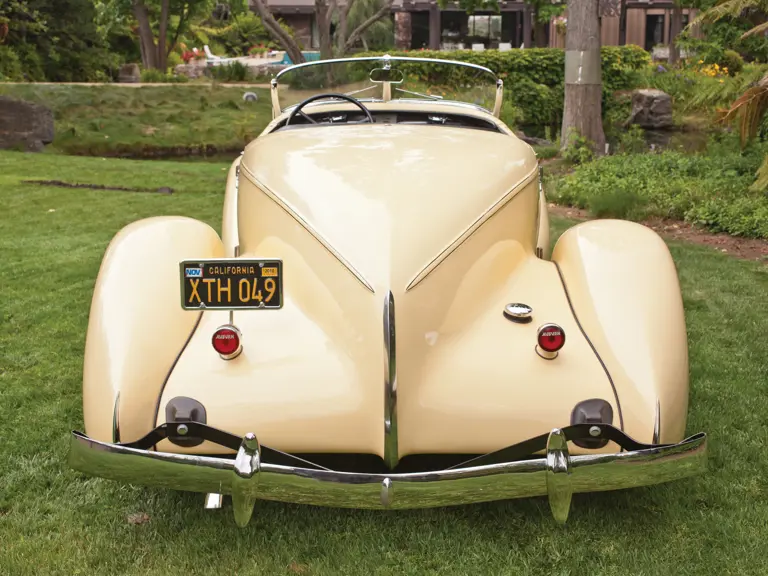
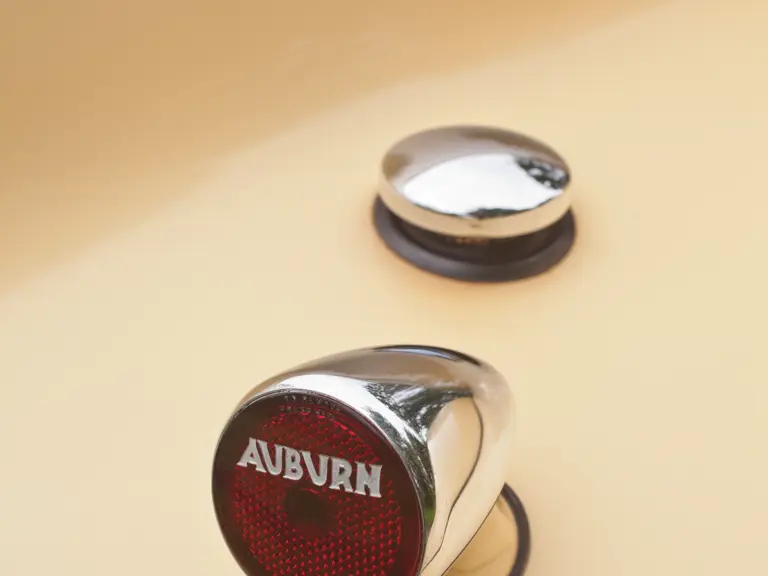
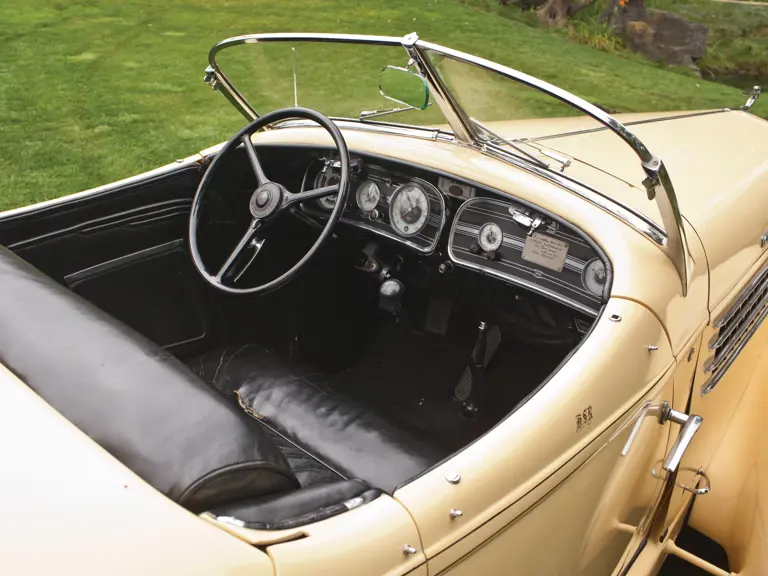
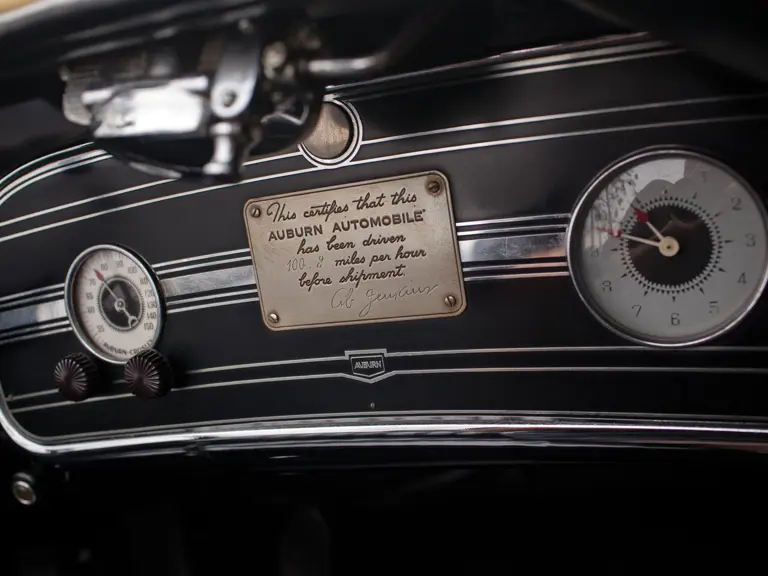

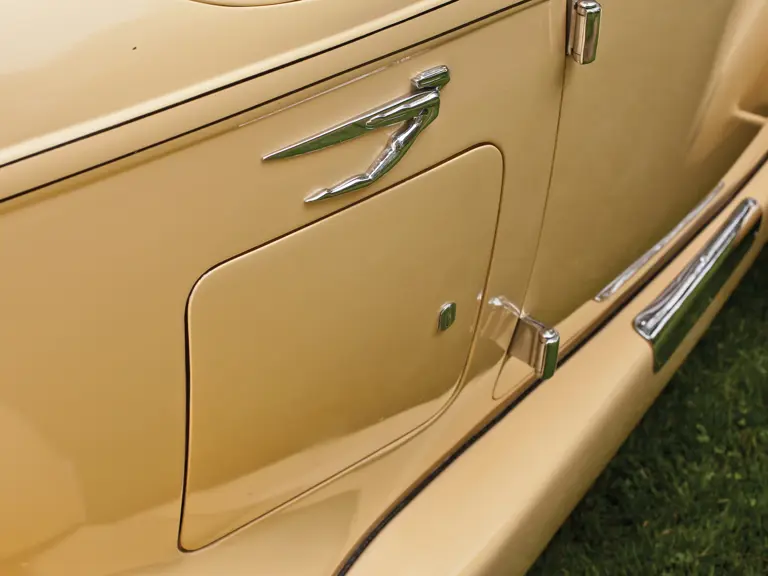
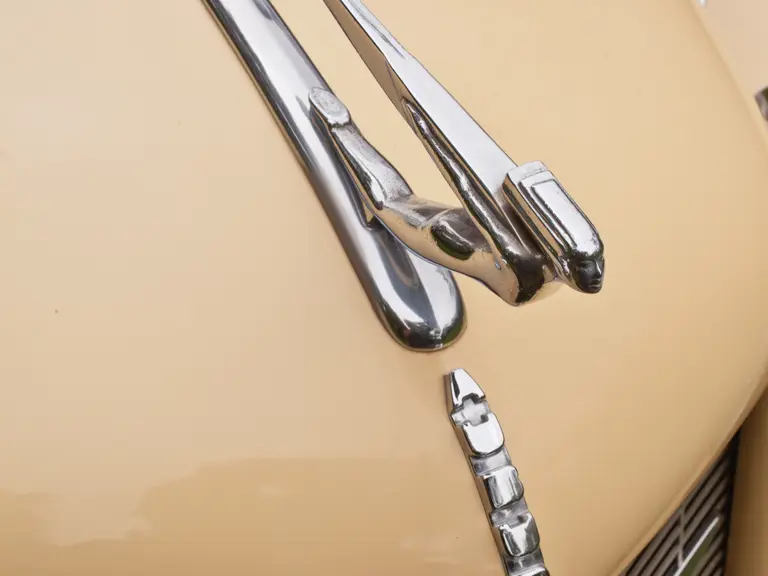
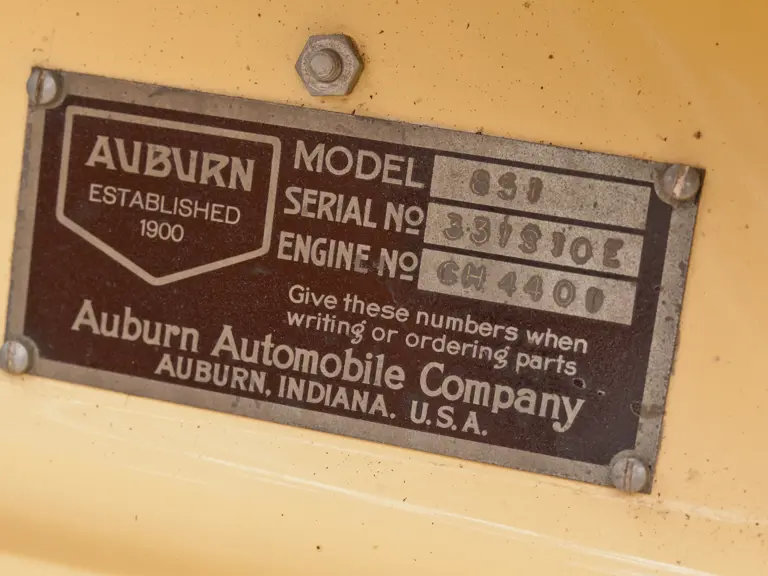


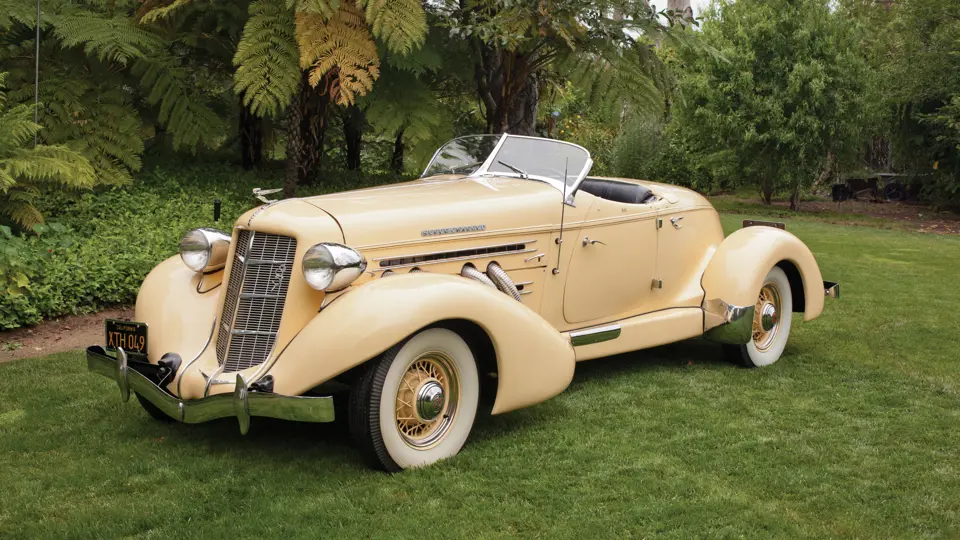
 | Monterey, California
| Monterey, California


